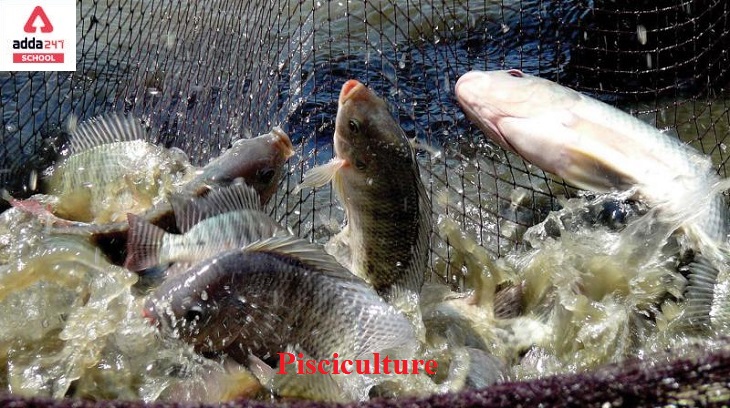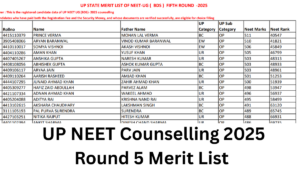What is Pisciculture?
What is Pisciculture? Fish is a delicacy. It not only tastes good but is high in proteins and other minerals, and thus is at the top of the list when it comes to healthy and nutritional dietary options. Did you know that fish are farmed? And this type of farming is termed ‘Pisciculture’. So let us now know about what pisciculture is and have an in-depth study about it!
Fish farming, also known as pisciculture, is the process of breeding, growing, and transporting fish for both domestic and commercial reasons. It’s also referred to as fish farming, aquaculture, or mariculture.
When discussing the commercial operations of raising and harvesting aquatic organisms for profit or survival, the word aqua farming is a broad term. The term “mariculture” refers to the practice of aqua farming in the water. Aquafarming, or the raising of fish in tanks or in house ponds, is referred to as pisciculture. To fulfill demand, all of these types of aquafarming and enterprises are expanding at a rapid pace. Aquaculture is expected to grow three times faster than land-based agriculture markets, according to the food and agriculture business.
It is already a big business, with China, India, and Vietnam producing the most, and the United States producing the least. On a global scale, the rising demand for seafood, particularly high-quality protein, is fueling the expansion. The bulk of seafood produced on the planet is generated in some form of aquaculture. Crustaceans, molluscs, aquatic plants, and algae, as well as a variety of fish, are all becoming big enterprises around the world.
Pisciculture, on the other hand, is divided into three categories. Monoculture, Polyculture, and Monosex Culture are the three types of culture.
Pisciculture meaning
Commercial fish breeding is known as pisciculture. It’s a sort of aquaculture that involves the careful cultivation and harvesting of aquatic animals like fish, crabs, and molluscs. It can be carried out in either a natural or a pseudo-natural setting. A fish hatchery is a facility that releases juvenile fish into the wild for recreational fishing or to supplement a species’ natural population. Carp, catfish, salmon, and tilapia are the most common fish species raised in fish farms around the world.
Define pisciculture and Types of Pisciculture
There are a variety of fish farming systems:
Monoculture
Monoculture permits a single species of fish to be farmed. It has a high level of production and quality. These fish are well-liked by consumers.
Polyculture
Composite or mixed fish farming is another name for polyculture. Polyculture allows for the growth of multiple species of suitable fish in a single pond. Their feeding habits, on the other hand, must differ so that each species may subsist on a distinct type of food from a common source. It is a type of Pisciculture that is useful.
Monosex Culture
Monosex Culture allows for the cultivation of either female or male fish of the same species. Fish are obtained in this manner through this culture. Tilapia is one example of such a fish.
Read About: King of vegetables
Meaning of Pisciculture and Auqaculture: Methods
Different methods are used by different fish farms; these are detailed further down:
Cage System
Metal cages are submerged in water containing fish in the Cage System. This method of aquaculture allows the fish to be fed artificially. Despite the fact that the cage industry has made several technological advancements in cage building in recent years, the potential of storm-related damage and escape is always a concern.
Pond System
People in a Pond System require a small pond or tank in which to raise fish. It is one of the most beneficial methods of fish rearing. Fish are frequently fed commercial fish food in small systems, and their waste products can help fertilise the fields. The pond grows water plants and algae as fish food in larger ponds.
Integrated Recycling System
Large plastic tanks carrying fish are placed in a greenhouse as part of the Integrated Recycling System. In addition, close to the tanks is a hydroponic bed. People grow basil, parsley, and other herbs using the water from the fish tanks. When tilapia are reared in tanks, they can eat algae that grows naturally in the tanks when they are fertilised appropriately.
Classic Fry Farming
Fish are raised from eggs to fingerlings and then released in stream water in Classic Fry Farming. Pellets of commercial fish food are given to the fry.
Pisciculture: FAQs
What is pisciculture and how does it work?
The process of producing and rearing fish in ponds, reservoirs, lakes, rivers, and paddy fields is known as pisciculture or fish culture.
Who is the Blue Revolution’s forefather?
Fathers of the Blue Revolution are Dr Hiralal Chaudhuri and Dr Arun Krishnsnan.
What type of fish is the healthiest to consume?
Salmon is the healthiest fish to consume from a nutritional aspect.
In India, which state is the largest producer of fish?
Andhra Pradesh is India’s greatest fish producer.
What are the three different kinds of fish farming?
Extensive, semi-intensive, and intensive fish farms are the three primary types of fish farms, based on how the fish are raised.









 UP NEET Counselling 2025 Round 5 Merit L...
UP NEET Counselling 2025 Round 5 Merit L...
 RBSE Class 10 Model Paper 2026 Out, Down...
RBSE Class 10 Model Paper 2026 Out, Down...
 RBSE Class 12 Model Paper 2026 for Arts,...
RBSE Class 12 Model Paper 2026 for Arts,...














